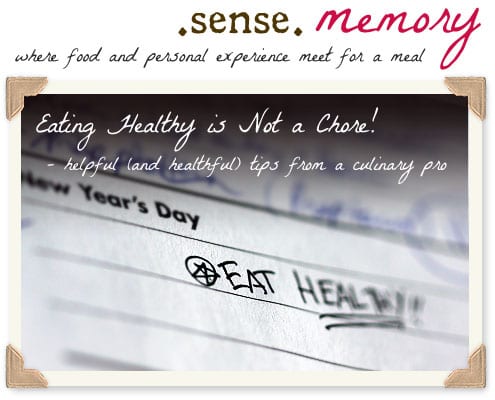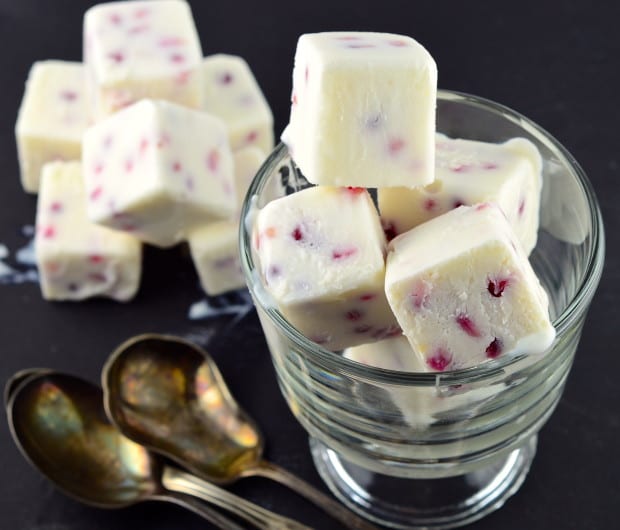Denise Sakaki is a freelance food writer and photographer who…
Denise Sakaki talks to Anne Haerle about some of the most common misconceptions about healthy cooking and eating.
By Denise Sakaki
It happens every time: New Year, but same Old Promises to “eat healthy” by making drastic dietary cuts with zero fat, sugar, carbs and guzzling the latest celeb juice diet. Of course, this leaves you giving the waiter at the restaurant a wild-eyed stare to not even dare bring the dessert menu, as your flavor-starved self nervously ponders using the butter knife as a makeshift shiv to make off with the bread basket at the neighboring table. Resolutions go unfulfilled, the emergency stash of Tasty Cakes are unleashed, and the dreaded concept of eating healthy continues its legacy of having a bad reputation. It’s a shame, because it’s not healthy eating that’s negative, but the way it’s approached, which is often an all-or-nothing attitude, leaving our plates looking forlorn and wanting.
But there’s hope – culinary professionals like Anne Haerle who have a background in both the restaurant and real-life world want to change attitudes toward nutrition. It’s about making smart, balanced choices to get rid of the chore-like attitude of “healthy eating,” and just make it “eating.”
Anne is a professional recipe writer and tester for Sur La Table, running as many as 50 recipes a month through a kitchen gauntlet, in true Iron Chef style. She graduated from the Culinary Institute of America in New York, has worked at restaurants across the country, and has spent time as a personal chef with a focus on healthy dishes.
All this experience inspired her to create the blog, YourInspiredChef.com, which combines her culinary background with a desire to encourage people to get more in touch with the food on their plate. This genuine love of food all started out very simply – in her own home, with the desire to encourage healthy habits for her loved ones.
“I took an online course in Sports Nutrition which reinforced a lot of the things I was already doing and taught me a few new tricks like getting protein, carbs, and healthy fats into each meal and snack,” says Haerle. “Since several members of my family have struggled with their weight and weight-related diseases, I was inspired to start a personal chef business. I wanted to show people with conditions like diabetes and heart disease that they could still eat delicious meals that actually helped them feel better.”
While her time at the Culinary Institute wasn’t all about counting calories, Anne shares the most crucial lesson about being food-smart:
“Culinary school provides a foundation of classic French technique and professional cooking knowledge that you can apply in any direction. Between my self-taught background and my professional experience, I can create healthy cooking and baking recipes that don’t skimp on flavor.”
What are some of the most common misconceptions over people’s perceptions of healthy cooking/eating?
“Most people think eating healthy is about taking everything away – calories, fat, and mostly, flavor. That’s just not true. When I cooked in restaurants, I learned quickly that it’s easy to add lots of salt, butter, cream, oil, and other high-fat ingredients to make almost anything taste good. But great-tasting food doesn’t require gooping it up with butter and cheese. I’ve found for myself and through my previous personal chef clients that if you prepare dishes that let the natural flavors and textures of the main ingredients shine through, they usually taste better than the high-calorie stuff. I’ve also found that people who want to eat healthy think they have to abandon everything they’ve ever loved and switch to eating carrot sticks and quinoa all day. That’s just not true either. With all the amazing choices we have a grocery stores, farmers markets, and specialty stores, it’s easy to make healthier versions of favorite dishes and actually look forward to your healthy meals rather than choke them down.”
What are easy food preparation ideas to keep the flavor and consistency of favorite foods, while making those dishes more health conscious?
“Some techniques are simple, like using lower calorie versions of items like milk and cheese. One of my favorite strategies is to only measure the high-calorie foods I use so I can enjoy them without seeing it on the scale a few days later. For instance, if I’m making a big salad I don’t worry about measuring the greens or other vegetables, but I’m careful to portion out dressing, cheese, and nuts. I also use those items as a garnish rather than mixing them in. I want to be able to taste them, so putting them right on top works well. But I’d rather take a food and cook it in a way that brings out the best of its natural flavors and textures, rather than cover it up with other ingredients. Take broccoli for instance. What’s great about it is the slightly bitter crunch. I like to sauté it with a little olive oil and chile flakes to preserve the texture and balance that pleasant bitterness with a touch of heat than cover it up with a cheese sauce.”
Having worked in restaurants, what’s a notorious but invisible health trap? What can people do to try and order healthy on restaurant menus?
“Many restaurants rely on loads of salt, fat, and sugar to make their food taste good. What happens when we eat this kind of food all the time is that it trains our palate to crave only sweet, salty, and fatty. The other problem with a lot of restaurants is they totally distort our perception of what a regular portion size should be. When I go out, I try to look ahead online at the menu and plan accordingly. Typically, anything described as “crispy” is going to be fried so that’s a common pitfall. Know too that most restaurants finish everything with a slick of butter or oil, especially grilled meats. And be careful of some restaurant salads – while they sound healthy, they’re often loaded with high-calorie dressings, cheese, and nuts. I’ve found the best way to eat healthy at restaurants is to ask questions and don’t be afraid to ask for simple modifications, like no butter to finish a dish and dressing on the side. A lot of times we’re reluctant to do so because we don’t want to be seen as a pain. But health is more important than manners.”
Denise Sakaki is a freelance food writer and photographer who is always searching for the connections between food and personal experience. She is the creator of the food blog Wasabi Prime and contributor to Serious Eats, 425 Magazine and Drink Me Magazine.




